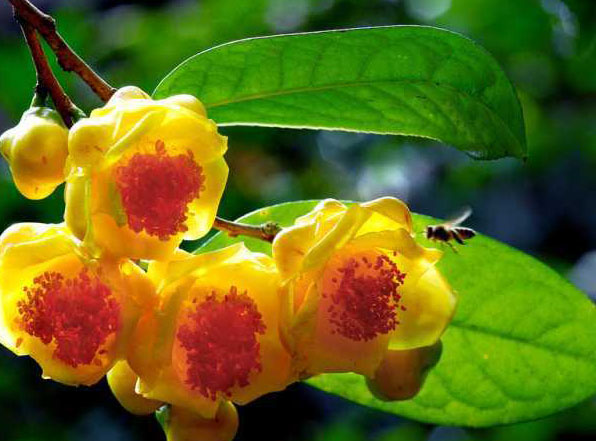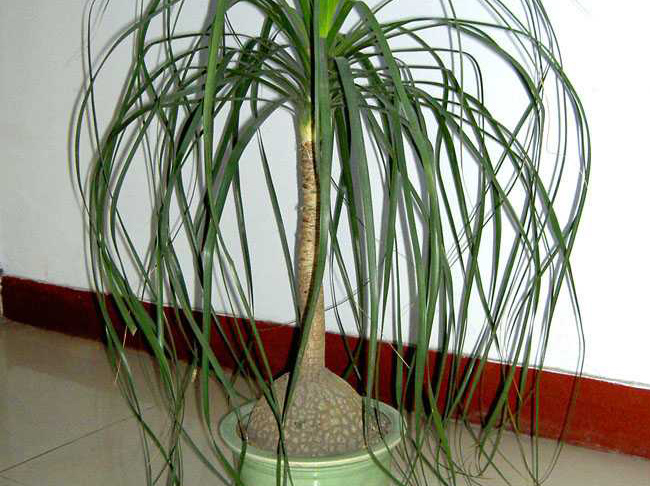Propagation method of Dendrobium
Dendrobium is also called undead grass, soul grass, forest orchid, golden nobile and so on. It is also regarded as a valuable medicinal material, among which Dendrobium candidum has the best medicinal value and nourishing effect. There are many kinds of Dendrobium. At present, there are more than 50 varieties of Dendrobium such as Dendrobium candidum, Dendrobium candidum, Dendrobium nobile and Dendrobium Huoshan. So do you know how Dendrobium propagates? Let's learn more about it.

1. Seed propagation
Many friends say that Dendrobium has no seeds, in fact, it is just that its seeds are very small, and its seeds generally do not germinate, and few people use seed reproduction to plant Dendrobium, so it is mistaken for no seeds. In fact, as long as under specific conditions, Dendrobium seeds can also germinate, but the planting technology is relatively difficult, although the number of seeds is very large, but the germination rate is not very high, so the general growers of Dendrobium will not adopt this thankless way of reproduction.
2. Ramet propagation
At present, ramet propagation is the most commonly used way of propagation of Dendrobium. The best planting time for ramet propagation is generally in March and April in spring. Of course, the survival rate of planting in autumn is also good. Ramet is usually the use of new plants, and then select exuberant, robust, well-developed root plants for culture. In the ramet, do not hurt its roots, this will affect its survival rate, the second is to properly trim the withered branches and weaker stems and leaves of the ramet, so that the cultured Dendrobium grows better.
3. Cuttage propagation
Cutting propagation is generally carried out in spring and summer, the best planting time is May and June, when cutting, the survival rate is the highest. Cutting propagation is also required for the selection of seed stem, generally choose three-year-old or more than three years of strong, full stem, each seed stem is generally about 20 cm, at the same time need to retain four or five nodes. Finally, the treated seed stem was inserted into the cultivation ground for planting.
4. High bud propagation
In fact, high bud propagation is not commonly used, because the survival rate of its planting is still lacking. If it is to use high bud propagation, it is best to carry out in summer, when the vitality of high bud is the most exuberant period. Then when we choose high buds, it is best to choose the tall buds with a little root system of the robust plants that have been more than three years old, or the sturdy ones.
5. Budding propagation
Budding propagation is only used in a small number of areas, it is generally selected to grow more than two years of Dendrobium. Then use the slicing technique to cut off about four or five centimeters of new buds on the mother plant, and then soak the cut buds in rooting water. Usually, new roots will grow after 24 hours, and then they can be planted. However, in the process of planting, it should be noted that watering should not be carried out, and reasonable watering should be carried out after the plant has completely survived.
These are the several propagation methods of Dendrobium that the editor wants to share with you today, of which the most commonly used is plant propagation. You can also refer to the rest of the reproduction methods. If you have your own favorite and higher survival rate of reproduction, you can also share it with the editor.
- Prev

What should be paid attention to in potted Golden scented Tea?
When potted, it is appropriate to choose rotten leaf soil or peat soil plus part of garden soil and river sand to prepare culture soil. In order to make it grow rapidly, it should be planted in a well-ventilated tile basin. It is best to choose a deep cylinder basin when planting, and fill a layer of broken tiles at the bottom of the basin before going up to the basin to facilitate drainage.
- Next

How to cultivate and propagate wine bottle orchid
Bottle orchid is an evergreen succulent plant of the tequila family. The stem is erect and the base is very fat, just like a wine bottle. The top group of the stem gives birth to ribbon-shaped slightly leathery blue-green leaves, very similar to the orchid, hence the name wine bottle orchid. Sex likes plenty of sunlight, and the suitable temperature for growth is 20-25 degrees Celsius.
Related
- Fuxing push coffee new agricultural production and marketing class: lack of small-scale processing plants
- Jujube rice field leisure farm deep ploughing Yilan for five years to create a space for organic food and play
- Nongyu Farm-A trial of organic papaya for brave women with advanced technology
- Four points for attention in the prevention and control of diseases and insect pests of edible fungi
- How to add nutrient solution to Edible Fungi
- Is there any good way to control edible fungus mites?
- Open Inoculation Technology of Edible Fungi
- Is there any clever way to use fertilizer for edible fungus in winter?
- What agents are used to kill the pathogens of edible fungi in the mushroom shed?
- Rapid drying of Edible Fungi

